three-masted sailing ship
description: painting by unknown artist, Poole Museum
84 results

The Words You Should Know to Sound Smart: 1200 Essential Words Every Sophisticated Person Should Be Able to Use
by
Bobbi Bly
Published 18 Mar 2009
After Laura wore a XANTHIC dress to the spring ball, the area’s nouveau riche followed her example at subsequent galas. Xanthippe (zan-TIP-ee), noun An ill-tempered, shrewish woman. Felicia is far from a XANTHIPPE simply because she interacts only with certain members of the household staff. xebec (ZEE-beck), noun A small, three-masted ship used in the Mediterranean for commerce that once was a favorite vessel of the leisure class. All of the amassed XEBECS ruined the otherwise spectacular views from our villa during the month we spent on the Greek Isles. xenocurrency (zen-uh-KURR-uhn-see), noun Money that is circulated or traded in money markets outside its country of issue.
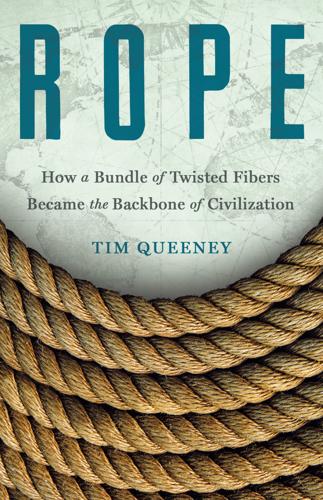
Rope: How a Bundle of Twisted Fibers Became the Backbone of Civilization
by
Tim Queeney
Published 11 Aug 2025
STRAND SIX CONTROLLING THE AGE OF SAIL THE JULY MORNING IN 1812 was sublime, with fair-weather clouds puffed across the sky and a light breeze rippling the Atlantic off the New Jersey coast. While conditions were balmy that day, the sailors of the powerful U.S. Navy frigate USS Constitution were too busy to notice. They were aloft in the rigging of the three-masted ship working the ropes—untying reefing nettles, loosing buntlines and clewlines, and shaking out the canvas of the man-of-war’s sails. Their instructions were to set every piece of canvas. The sailors used the ship’s ropes to set the sails to get as much speed as could be wrung from the weak wind.
…
One of the largest of these steel behemoths was the German ship Preussen, built by the Ferdinand Laeisz company of Hamburg and launched in 1902. Preussen was 480 feet long overall (406 feet on deck), 5,081 gross tons, and carried five square-rigged masts. Sailors had to climb 190 feet from the deck to reach the mastheads of its three tallest masts. The ship was equipped with forty-seven sails that spread 73,000 square feet of canvas. With enough wind, all that sail area could drive the ship at twenty knots—faster than many steamships of the era. ROEBLING’S WIRE The wire rope John Roebling ultimately used for his Brooklyn Bridge design began with something called a portage railroad (a classic nineteenth-century scheme).
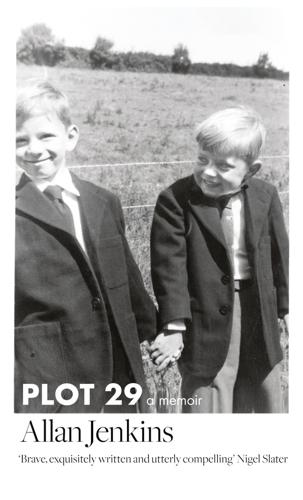
Plot 29: A Memoir
by
Allan Jenkins
Published 15 Mar 2017
We can’t believe our luck sometimes, like we have landed on the moon. Safety like we had dreamed of, a family like we’d hoped. The storytelling lasts about a year, not every night but nearly as often as I ask. They are mostly adventure yarns: pirates. I am big on pirates. The river calls me from outside our window, occasional small boats elevated into three-masted ships, skull and crossbones flying, bearded ear-ringed men, heavily armed, sabres between their teeth. I am an impressionable child, overexcited in the summer light. Christopher is kind. We are close. 1961. Christopher is left-handed. Neither Dudley nor the school approves. Both try to train it out of him.

The Wood Age: How One Material Shaped the Whole of Human History
by
Roland Ennos
Published 18 Feb 2021
What these events show in hindsight and with the benefit of a broader historical perspective is not only the hubris and folly of powerful men, but the stasis of technology in the High Wood Age. For these two ships, large though they were, were smaller than the great ships of antiquity. For instance, in 240 BC the tyrant of Syracuse, Hiero II, built an enormous three-masted barge, the Syracusia, the world’s first cruise ship. Only the lowest of its three decks was built to hold cargo, around seventeen hundred tons of the grain that was one of Sicily’s biggest exports. The middle deck was fitted out for passengers and included thirty cabins, a chapel, library, gymnasium, and bath complex, all elaborately decorated and furnished with marble surfaces, paintings, statues, and living foliage.
…
He oversaw the construction of a sawmill in the dockyard, powered by a Boulton and Watt steam engine; just a few men could now cut the large numbers of identical small timbers needed to build ships. But he also realized that he had a supply problem with one standardized component that all sailing ships of the time needed in large numbers—ship’s blocks or pulleys. A single three-masted ship of the line could have over a thousand pulleys in the complicated rigging, which were essential to enable the crew to set the sails. The navy employed hundreds of men in separate shipyards around the country hand-making these items, but this was expensive, and the supply chain was unreliable.
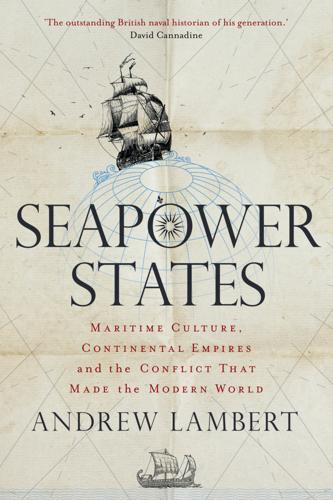
Seapower States: Maritime Culture, Continental Empires and the Conflict That Made the Modern World
by
Andrew Lambert
Published 1 Oct 2018
As the Ottoman threat loomed, and terra firma imperialism roused the hostility of other Italian states, Venetian intellectuals hurriedly reorganised their past: Marcantonio Sabellico’s official history of 1487 was closely modelled on Livy’s Roman history.43 Jacopo de’ Barbari’s View of Venice Jacopo de’ Barbari’s colossal woodcut of Venice of 1500 emphasised the critical role of the ship, accurately rendered, as the symbol of the Republic in an image that celebrated the city’s fame and its unique nature. This was not so much a map as a statement of Venetian primacy in trade between East and West, as the greatest maritime power in Europe.44 Barbari filled the waterfront with outsized three-masted merchant ships, while an accurate account of the Arsenale, complete with galleys, stressed naval power. No longer generic background decoration, ships had become symbols of hope at a dark juncture in Venetian history. They spoke of fame, glory and profit at a time when all three were in short supply; they helped sustain the illusion of greatness and maintain social cohesion.45 Alongside the art of seapower Venice adopted the latest methods of literary exposition.
…
King Edward IV was profoundly impressed by Flemish marine art, but his turbulent career emphasised the inability of contemporary naval forces to secure the British Isles. English wars were waged both on and for land, at home and abroad. The British Empire Seapower became an option after the development of the three-masted square rig and large carvel-built carracks that could carry ship-killing cannon. These warships transformed the strategic context. Edward’s posthumous son-in-law Henry VII built two such ships, the Regent and the Sovereign, and erected artillery forts to command invasion anchorages, layered defences against a repetition of his own invasion.
…
If England could rely on the sea for security against European threats it had the option of focusing on distant lands. Security and economics were closely connected. Habsburg control of Antwerp, which dominated English exports of wool and cloth, shaped More’s Utopia, a book suffused with the cultural advantages of insularity, the Greek language and three-masted ships.3 Although compromised by More’s continued adherence to a universal Roman Church, Utopia proved prescient and persuasive. The foundations of a seapower state were laid when Henry VIII removed England from the European system. He declared his kingdom to be an empire entire unto itself, not subject to any higher temporal authority, adding an imperial cover to his Crown.
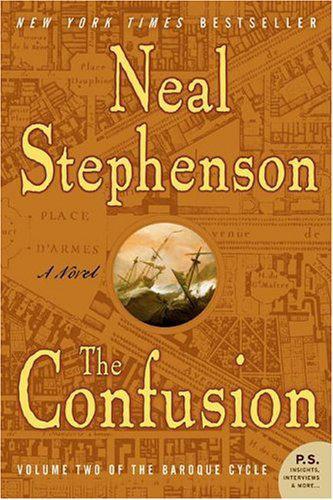
The confusion
by
Neal Stephenson
Published 13 Apr 2004
“Letters made their way down the King’s Highway to Vera Cruz and into the holds of galleons, to Havana and finally to Madrid, and other letters returned, and evidently some sort of explanation was proffered, and an arrangement made. After a while I was moved to an apartment where I recovered my health, and then I was conveyed back down to Vera Cruz and given command of a three-masted ship of thirty-two guns, and a fair crew, and told to go out and kill pirates and come ashore as infrequently as possible until I was given other instructions. “And here I could cite any amount of statistics concerning tonnage of pirate-ships sunk and pieces of eight recovered for the King and the Church, but for me the highest honor was that, among the boca-neers, I became known as the second coming of El Torbellino.
…
God willing.” His eyes turned in their sockets towards Eliza. As his head was covered in a wig, and the wig had an admiral’s hat planted athwart it, he did not like to turn his head from side to side if he could avoid it; such complicated maneuvers demanded as much prudent premeditation as tacking a three-masted ship. Eliza, recognizing as much, sidestepped into the Duke’s field of view. “I cannot imagine why you look to me when you say this, Monsieur le duc,” she said. “Soon, if I have my way, you shall hear from Étienne a certain proposition that shall make it all perfectly clear.” “Is it anything like the proposition you have spoken of in your letters to me?”
…
Jeronimo had included, among his new brothers, all of the galley-slaves who were not members of the Cabal, and promised that he would use his share of the proceeds to ransom them. This had produced only eye-rolling from those slaves who could understand what he was saying. As days had gone by, his promises had flourished like mushrooms after an autumn rain, until he had laid out a scheme for constructing or buying an actual three-masted ship, manning it with freed slaves, and setting out to found a new country somewhere. But as they had inched across the map towards Algiers, a depression had settled over him, and he’d gone back to predictions of a bloodbath in Egypt—or possibly even Malta. Accompanied by another, more heavily armed galleot, they had left Algiers behind—they hoped forever.

Begin the World Over
by
Kung Li Sun
Published 14 Jun 2022
The Chinawoman stood at the edge of her ship, feet planted wide and hands gripping the railing. She leaned over the side of the ship and shouted at something below her in the water. The harbor was a frenzy of boats, the water barely visible in the most crowded areas. There were twenty or so two- and three-mast ships at anchor, a typical number for a port of this size. What crowded the water were more than a hundred dinghies and skiffs, each of the small boats overstuffed with passengers. A yawl intended for half a dozen passengers sat low in the water with twice that number. A longboat with seats for twenty had every seat filled while, quite incredibly, another dozen people in the water clung to its sides.

Firepower: How Weapons Shaped Warfare
by
Paul Lockhart
Published 15 Mar 2021
One especially notorious incident involved the British warship HMS Captain, an otherwise conventional iron-built screw steamer. The ship’s designer, Cowper Phipps Coles, added two gun turrets of his own design to Captain’s main deck, but retained a full ship-rig on three masts. Captain’s freeboard was quite low but its center of gravity was high, meaning that in heavy seas the ship would be highly unstable. Only five months after Captain was commissioned (April 1870), it capsized and sank in a violent storm off Cape Finisterre on the Spanish coast, taking Cowper Coles and most of the crew with it. Turrets and sail power, apparently, made for a dangerous combination.
…
The brigs, sloops, and other coastal craft of the age of sail were reincarnated as the torpedo boat and the destroyer. What about the middling sort of warships, the frigates, which had proven themselves more valuable in day-to-day naval operations than the biggest three-deckers? They evolved, too. Oddly, frigates persisted in their old form—wooden-hulled, three-masted, ship-rigged—longer than any other kind of Western warship. They were hopelessly anachronistic by the 1880s, though, and soon they re-emerged as a new class: the armored battlecruiser. In form, they looked like mini-battleships, with a turreted main armament and smaller, quick-firing guns mounted in broadside, armored heavily enough to protect against all but the largest naval guns of the 1880s and 1890s, rifled guns of 12-inch bore and larger.
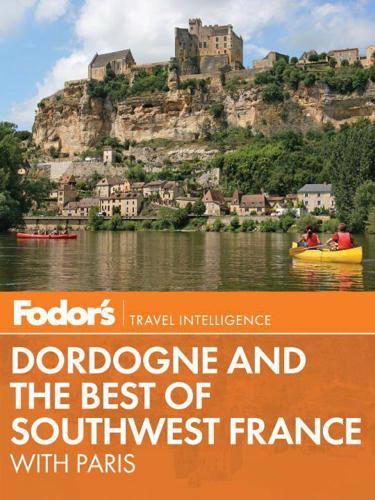
Fodor's Dordogne & the Best of Southwest France With Paris
by
Fodor's Travel Publications Inc.
Published 18 Apr 2011
Previous Chapter | Beginning of Chapter | Next Chapter | Contents Main Table of Contents Introducing the Basque Country, Gascony, and Hautes-Pyrénées The Basque Country, Gascony, and Hautes-Pyrénées Planner Getting Around The Basque Coast The Atlantic and Hautes-Pyrénées The Basque Country, Gascony, and Hautes-Pyrénées in Depth Previous Chapter | Next Chapter | Contents Top Reasons to Go | Getting Oriented Updated by George Semler A pelota-playing mayor in the province of Soule recently welcomed a group of travelers with the following announcements: that the Basque Country is the most beautiful place in the world; that the Basque people were very likely direct descendants of Adam and Eve via the lost city of Atlantis; that his own ancestors fought in the Crusades; and that Christopher Columbus was almost certainly a Basque. There, in brief, was a composite picture of the pride, dignity, and humor of the Basques. And if Columbus was not a Basque (a claim very much in doubt), at least historians know that whalers from the regional village of St-Jean-de-Luz sailed as far as America in their three-mast ships, and that Juan Sebastián Elkano, from the Spanish Basque village of Guetaria, commanded the completion of Magellan’s voyage around the world after Magellan’s 1521 death in the Philippines. The distinctive culture—from berets and pelota matches to Basque cooking—of this little “country” has cast its spell over the corners of the earth.
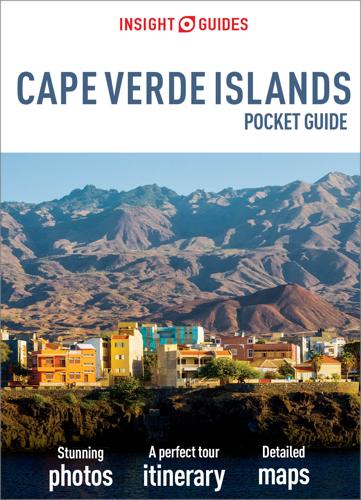
Insight Guides Pocket Cape Verde
by
Insight Guides
Published 1 May 2018
It was beached in September 1968 on its return journey from Brazil and Argentina, unevenly loaded with a cargo of cars, machinery and clothing, intended as gifts from General Franco to his supporters. It wasn’t the first ship to meet an untimely end here: the beach used to be called Praia da Atalanta after a Scandinavian three-masted sailing ship which ran aground on Christmas Eve, 1920. The main road south out of Sal Rei is shadowed by an older route, the Via Pitoresca, which was probably much more picturesque before drought ravaged its palm trees. After around 3km (2 miles), the old road rejoins the main road leading to the airport and the small town of Rabil 9 [map], home to many of the island’s construction, farming and tourism workers.

The Most Powerful Idea in the World: A Story of Steam, Industry, and Invention
by
William Rosen
Published 31 May 2010
This was, after all, the Age of Sail, and while guns and ammunition might be metal, getting those guns to where they could be useful required the pressure of wind on canvas. Wind was a useful source of power for mills, but its directional variability made it a capricious sort of transportation “fuel,” and a staggering amount of human ingenuity was required to make the wind blowing this way drive a three-thousand-ton ship that way. Each sail—a three-masted ship had at least nine—was raised, lowered, reefed, and turned by some portion of more than twenty miles of rope, every foot of which ran through up to a dozen different pulleys, contained within blocks of wood. The blocks consisted of shells, usually of elm, cut with several oblong slots, or mortises, each containing a hardwood pulley fitted with metal bushings spinning around a pin, usually made of iron.

Them And Us: Politics, Greed And Inequality - Why We Need A Fair Society
by
Will Hutton
Published 30 Sep 2010
Although the classical worlds of Greece and Rome were certainly innovative, especially when creating mid-level technologies – such as paving roads, developing more sophisticated ship rigging, creating central heating and warm public baths – neither developed a transformatory GPT. By contrast, the modern era – starting with the development of the three-masted sailing ship by entrepreneurial Portuguese ship-wrights and mariners in the middle of the fifteenth century – has witnessed a rush of GPTs. According to Lipsey et al., only 23 true GPTs have ever been invented, and 15 of them have appeared in the last 550 years.10 Moreover, the pace is accelerating. Nine GPTs – the internal combustion engine, electricity, the motor vehicle, the airplane, mass production, the computer, lean production, the internet and biotechnology – have been developed over the last 125 years.
…
There is every reason to believe that the number will double again in the next 125 years, as technologies build on each other at an exponential rate. Instead of an exhaustive account of each, I will discuss a sample. The impact of the printing press is obvious. Without it, the growth of science would have been impossible as there could have been no codifying or dissemination of scientific discoveries. Then there is the three-masted sailing ship, which allowed large vessels to sail close to the wind, permitted the Portuguese and then their European imitators to sail around the world. Without this GPT, there would have been no circumnavigation of the globe; no discovery of the Americas, leading to new centres of power and productive capacity; no European colonisation; no long-distance sea trade; no rich European merchant class; no consequent financial innovations, such as joint stock companies and marine insurance, to deal with the risk and uncertainty of long voyages; and less possibility of the principles of magnetism being understood.
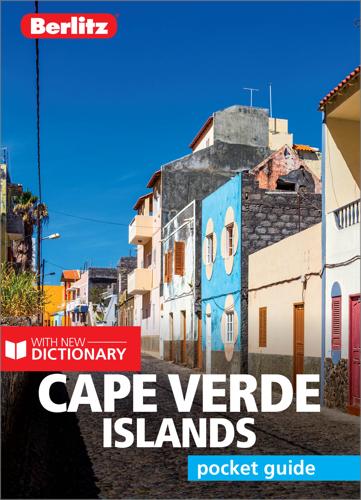
Berlitz Pocket Guide Cape Verde
by
Berlitz Publishing
Published 1 May 2018
It was beached in September 1968 on its return journey from Brazil and Argentina, unevenly loaded with a cargo of cars, machinery and clothing, intended as gifts from General Franco to his supporters. It wasn’t the first ship to meet an untimely end here: the beach used to be called Praia da Atalanta after a Scandinavian three-masted sailing ship which ran aground on Christmas Eve, 1920. The main road south out of Sal Rei is shadowed by an older route, the Via Pitoresca, which was probably much more picturesque before drought ravaged its palm trees. After around 3km (2 miles), the old road rejoins the main road leading to the airport and the small town of Rabil 9 [map], home to many of the island’s construction, farming and tourism workers.
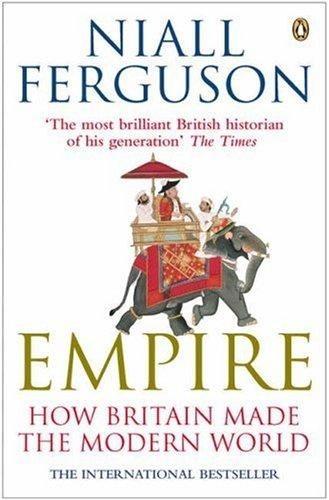
Empire: How Britain Made the Modern World
by
Niall Ferguson
Published 1 Jan 2002
Even Drake’s West Indian expedition in 1586 set off from Cartagena to Cuba only to return to Cartagena sixteen days later as a result of errors in navigation and the cumulative effect of compass variation. In naval technology too the English were laggards. The Portuguese were the initial leaders when it came to speed. By the end of the fifteenth century, they had developed a three-masted ship, which generally set square sails on the fore and main masts and a triangular lateen sail on the mizzen mast, allowing the ship to tack more easily. They were also pioneers of the carvel, which was constructed around a strong internal frame rather than clinker-built. This was not only cheaper; it was also able to accommodate watertight gunports.
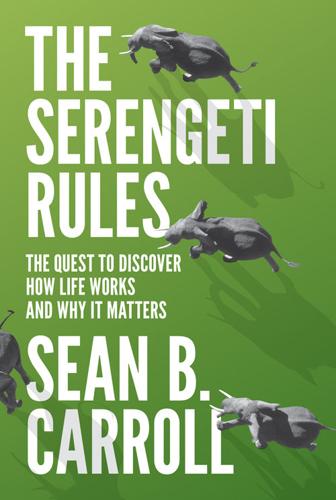
The Serengeti Rules: The Quest to Discover How Life Works and Why It Matters
by
Sean B. Carroll
Published 16 Feb 2016
–FRANÇOIS JACOB Great Britain was not the only nation interested in exploring the poles. Driven by economic and strategic considerations, sometimes by national glory, and occasionally by scientific curiosity, many countries sent expeditions north and south in the first part of the twentieth century. On July 11, 1934, the three-masted French ship Pourquoi-Pas? IV (“Why Not?”) left Saint-Malo on the Normandy coast for the icy shores of Greenland. In command was the celebrated polar explorer Jean-Baptiste Charcot. Trained as a physician, Charcot abandoned medicine and made his reputation on two government-sponsored French Antarctic expeditions: on the Français in 1903–1905 and the first Pourquoi-Pas?

Norman Foster: A Life in Architecture
by
Deyan Sudjic
Published 1 Sep 2010
Chigirinsky asked Foster as a favour to assess the feasibility of a hypothetical structure conceived by Baturina and a Russian architect, and then to see how it might be developed on a specific site. The site eventually targeted by Baturina stood very close to Zurab Tsereteli’s bizarre monument to Peter the Great, a giant bronze representation of a three-masted sailing ship, with a huge figure standing on deck, installed thanks to the intervention of her husband the mayor. The site is currently occupied by the Central House of Artists, built in the Brezhnev era, and as unpopular as buildings from the 1970s are in Britain. Nevertheless it is a base for many of Moscow’s artists, and it houses the Tretyakov Gallery, which boasts the finest collection of constructivist art in the world.
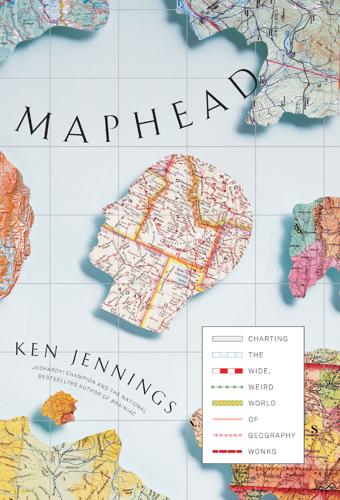
Maphead: Charting the Wide, Weird World of Geography Wonks
by
Ken Jennings
Published 19 Sep 2011
There’s no better place than the Royal Geographical Society to consider the human face of mapmaking. As I stand in the society’s main hall, John Singer Sargent’s portrait of Lord Curzon, Asian explorer and viceroy of India, considers me coolly from its post above the great marble fireplace. Behind me is an intricate scale model of the Discovery, one of the last three-masted wooden ships ever built in Britain, which in 1901 took Scott and Shackleton to Antarctica, a continent from which, in the end, neither would return alive. To my right is an odd oil painting of Richard Francis Burton, spotlit in the dark, huddled under a blanket on a dirt floor. The setting might be a Mecca alley or a prison cell, but either way, as Burton stares warily out at the viewer, he gives the impression that he’d rather be somewhere else entirely.
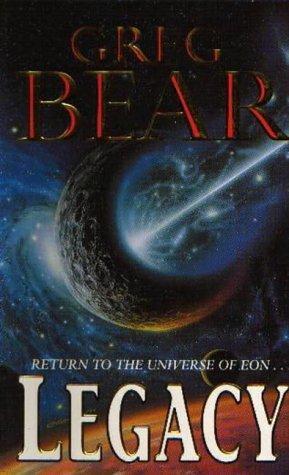
Legacy
by
Greg Bear
Published 1 Jan 1995
Coming into the margin of the main harbor, separated from the Terra Nova by a curving wall, I saw the two Brionist flatboats tied up. Tractors and other equipment were being offloaded on ramps and with small cranes. Farther along, the largest ship in port was a full-rigged vessel about forty meters long, with three masts and two cylindrical slatted windmills for generating power. Two gangplanks linked the ship with the pier, and men carried boxes along the planks, loading them onto the ship. More sailing ships — three-masted schooners, barques, a small ketch, all with elegant sharp prows, all wide in the beam — lay at anchor. One of these ships, a barque with a single low, large canvas windmill mounted astern, glowed along its rigging and rails with hundreds of little electric lights, and, as if that might not be enough, additional gas lanterns hissed port and starboard.
…
I made my way around the boat before the assembling of the crew, and made my own assessment. In their decades on Lamarckia, the immigrants who had taken to these seas had pushed the words for things nautical this way and that, deleted or elided, added and compressed, but still, most were recognizable. Recognizable as well was the design of the Vigilant, a forty-meter three-masted full-rigged ship made largely of xyla, with brass and steel trim. A few details would have startled sailors on Earth (or in the fourth chamber of Thistledown, where a replica clipper ship had once plied the Lake of Winds): broad in the beam, forecastle prominent, the bow sharp but with a bulbous protrusion at the waterline.

(Pocket Adventures Pocket Adventures) Lynne Sullivan
by
Pocket Adventures Aruba, Bonaire
and
Curacao -Hunter (2008)
This isolated area is known by its Caiquetio name, Hudishibana, but most people call it the California Dunes because of the mounds of white sand that surround the focal point, the California Lighthouse. The stone lighthouse was designed by a French architect in 1910 and then constructed on Aruba between 1914 and 1916. It's named after the S.S. California, a wooden-hulled barquentine (or barkentine, a three- to five-masted sailing ship) that sank near shore more than a century ago. The coral-encrusted wreck is popular among underwater photographers, but rough seas and strong currents make it difficult to reach and advisable only for advanced divers on a calm day. Did You Know? You may read elsewhere or hear tour guides claim that the S.S.

This Machine Kills Secrets: Julian Assange, the Cypherpunks, and Their Fight to Empower Whistleblowers
by
Andy Greenberg
Published 12 Sep 2012
At one point Zimmermann even called Ron Rivest, one of the three professors who had invented MIT’s public key scheme, to ask his advice, only to find that MIT was running the program on a mainframe using LISP, an artificial intelligence language beyond Zimmermann’s means. Merritt, on the other hand, could perform the sorcery of public key encryption on a mundane microcomputer, the equivalent of assembling a three-mast model ship inside a perfume bottle. After their first conversation, Zimmermann began to call Merritt weekly to interrogate him for more details of how to pull off the miniaturized functions of the MIT cryptographers’ system. While Merritt had a long head start over Zimmermann, Zimmermann could program in C, a language that worked on everything from IBM computers to Ataris.
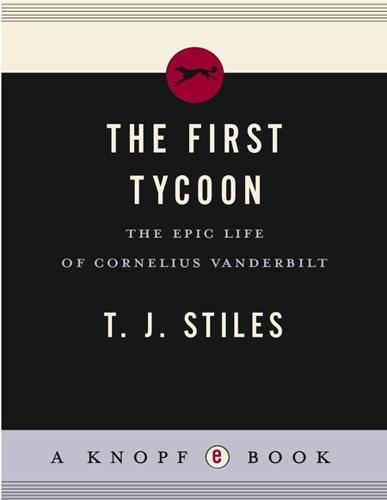
The First Tycoon
by
T.J. Stiles
Published 14 Aug 2009
“We always understood him to be the general agent as well as the President,” the collector explained. “That is what we call ‘Commodore.’ His word was will there.”12 Shrewd and tough, Mauran was a merchant with a long history at sea. Twenty years earlier, when Vanderbilt first had met Vice President Daniel D. Tompkins, the founder of the Richmond Turnpike Company, Mauran had owned a three-masted ship, the Maria Caroline, and he still invested heavily in the Havana trade. But most of his money was in the Richmond Turnpike corporation, which ran a ferry between Staten Island and Manhattan's Whitehall Slip—as it had when John De Forest took command of the Nautilus, the first steam ferry between the two islands, in 1817.
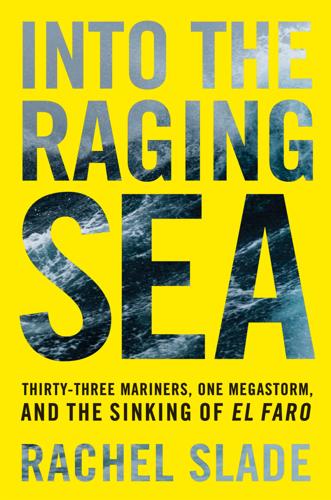
Into the Raging Sea
by
Rachel Slade
Published 4 Apr 2018
The US Coast Guard’s DC headquarters maintains a thick file of marine accidents, more than fifty-four hundred each year of varying magnitudes—from a tugboat engine explosion that killed the chief engineer aboard; to a giant oil drilling rig that broke free from its towlines in thirty-five-foot seas, beached on an island in the Gulf of Alaska, and threatened to dump 150,000 gallons of diesel onto the coastline; to the sinking of the three-masted HMS Bounty, caught in Hurricane Sandy, that took the life of Robin Walbridge, the ship’s captain, and a crew member. Among the cases in the coast guard’s file, Neubauer knew of just three major American ship casualties in peacetime; none of those losses involved cargo ships like El Faro. One was the SS Edmund Fitzgerald, which sunk in a storm on Lake Superior in 1975.

Fodor's Essential Belgium
by
Fodor's Travel Guides
Published 23 Aug 2022
The displays in this house, which was his home and studio, include many of the objects found in his work, especially the masks, and copies of his major paintings. Beside the house are five interactive spaces that use audiovisual displays to bring Ensor’s paintings to life. EVlaanderenstraat 29, Oostende P059/418–900 wwww.ensorstad.be A€12 CClosed Mon. Mercator NAUTICAL SIGHT | This handsome three-masted training ship of the Belgian merchant marine, which sailed from the 1930s to the 1960s, is now moored close to the city center, ready to sail if needed. Decks, fittings, and the spartan quarters have been kept intact, and there’s a museum of mementos brought home from the ship’s exotic voyages; during one they hauled back mysterious statues from Easter Island.

The River of Lost Footsteps
by
Thant Myint-U
Published 14 Apr 2006
Lawrence Valley, which fetched extravagant prices, and one imagines the fashionably correct at Pegu and Ava, and perhaps Mrauk-U as well, setting off their multicolored silks with the black broad-brimmed hats of a Rembrandt or a Vermeer.18 FROM THE RIO TEJO Around the time of the first Elizabethan settlements in Virginia, Filipe de Brito e Nicote escaped poverty in Lisbon and sought to make himself a Burmese king. He had come east as a teenage cabin boy on the lofty three-masted sailing ships of the day, working his way down the coast of Angola, around the Cape of Good Hope, to Goa and finally to the calm waters of the Bay of Bengal. By the time he reached Arakan, many years later, he was already an experienced fighter, and he was recruited as a musketeer in the local army. Before long he was an officer and led royal Arakanese troops in battle.
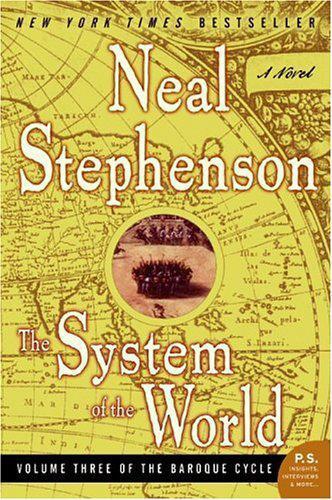
The system of the world
by
Neal Stephenson
Published 21 Sep 2004
He wondered if London might get more than it bargained for, by replacing that barrier with through streets. The Southwark side was much more open, and parts of it were un-obstructed, so that Daniel, and grazing dairy-cows, could inspect each other across a few yards of water, mud, and turf. But just as the sloops and schooners were giving way to proper three-masted ships as they progressed down this stretch of the Pool, so the small wharves and warehouses of city merchants were being supplanted by vast flat yards that owned long swaths of the bank, big as battle-fields, and almost as noisy: the ship-yards. Some bloke at the Kit-Cat Clubb had tried to convince Daniel that there were now no fewer than two dozen ship-yards active along the edges of the Pool, and almost as many dry-docks.
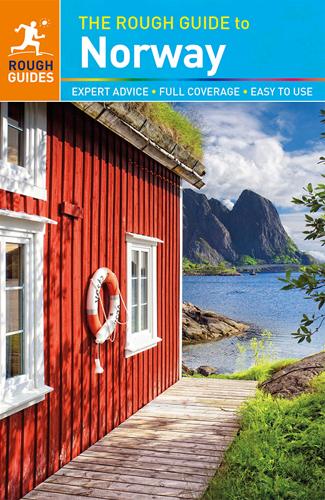
The Rough Guide to Norway
by
Phil Lee
Published 25 Nov 2013
CRUISING THE BLINDLEIA Lillesand’s nautical highlight is the three-hour cruise aboard M/B Øya (July to early Aug Mon–Sat daily at 10am; 255kr one-way, 420kr return; 95 93 58 55, blindleia.no), a dinky little passenger ferry which wiggles its way south to Kristiansand in part along a narrow channel separating the mainland from the offshore islets. Sheltered from the full force of the ocean, this channel – the Blindleia – was once a major trade route, but today it’s trafficked by every sort of pleasure craft imaginable, from replica three-mast sailing ships and vintage tugboats to the sleekest of yachts. Other, faster, boats make the trip too, but the M/B Øya is the most charming. If the sailing schedule of the M/B Øya does not suit, contact Lillesand tourist office for details of a wide variety of local boat trips, from fishing trips and cruises along the coast to the summertime badeboot (bathing boat), which shuttles across to Hestholm bay on the island of Skauerøya, where swimmers don’t seem to notice just how cold the Skagerrak actually is.
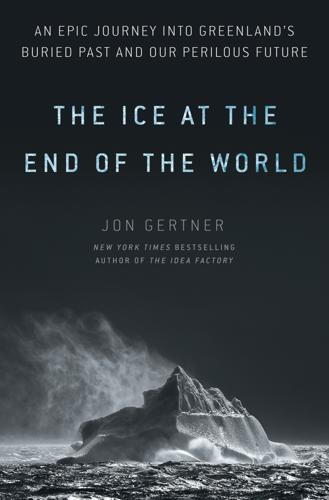
The Ice at the End of the World: An Epic Journey Into Greenland's Buried Past and Our Perilous Future
by
Jon Gertner
Published 10 Jun 2019
“How near the pole this will bring him is not known, and it is not certain that he will be able to go further; but if he finds the sea there covered with fixed ice, he will continue to the north, and may reach the pole.”12 Privately, in letters and memos, Peary said nothing of the pole, which he likely saw as a vanishingly remote possibility. “My object is to locate the northern terminus of Greenland,” he wrote to Langdon Gibson, a member of his party.13 A few months later, aboard the Kite, a three-masted, steam-powered ship outfitted for the icy Arctic seas, Peary began his journal for the Greenland expedition. “At five in the afternoon of June 6, 1891,” he wrote, “the Kite cast off from the foot of Baltic Street, Brooklyn.”14 The ship sailed under the Brooklyn Bridge, up the East River, and headed northeast along the coast of New England.
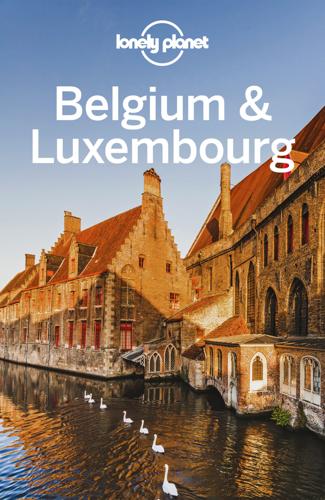
Lonely Planet Belgium & Luxembourg
by
Lonely Planet
Museumschip AmandineMUSEUM (map Google map; %0494 51 43 35; www.zeilschipmercator.be/amandine/en; Vindictivelaan 35-Z; adult/child €4/2; h10am-5pm Tue-Thu, Sat & Sun) The last Ostend trawler to have fished around Iceland (1970s) is brought to life with waxwork figures, videos and sound effects. Highlights include the fish-freezing room. MercatorMUSEUM (map Google map; %0494 51 43 35; www.zeilschip-mercator.be; Vindictivelaan; adult/child €4/2; h10am-5pm) This fully rigged, three-masted 1932 sailing ship was once used for Belgian Navy training purposes and is now a nautical museum that hosts changing exhibitions. Léopold II StatueSTATUE (map Google map; Zeedijk) Most of the beachfront is overshadowed by 10-storey concrete buildings, but beside the very ’50s Thermae Palace Hotel there’s some respite where a neoclassical arcade is topped by a striking equestrian statue of Léopold II.

1,000 Places to See in the United States and Canada Before You Die, Updated Ed.
by
Patricia Schultz
Published 13 May 2007
Stroll the Rhododendron Walk or visit the antiques-filled Gatehouse, which is patterned after a 16th-century orangery. Just across from the downtown Manteo waterfront and sitting on its own 25-acre island is Roanoke Island Festival Park. Here you can board and tour a re-creation of the Lost Colony’s three-masted ship, Elizabeth II, or chat with colony reenactors at the Settlement Site living-history area. The once rather ordinary downtown of Manteo, which faces the water, has happily come into its own in recent years, as a number of fine shops have opened, from booksellers to antiques emporia, joined by a handful of excellent restaurants.

God Created the Integers: The Mathematical Breakthroughs That Changed History
by
Stephen Hawking
Published 28 Mar 2007
In fact, Archimedes was best known in antiquity for his engineering accomplishments on behalf of the royal house of Syracuse. When King Hieron challenged him to move a great weight with a small force, Archimedes conceived the idea of the compound pulley and showed how he could easily pull in to shore a three-masted ship that 100 men could only pull in with much difficulty. According to the ancient Roman biographer Plutarch, it is in connection with this story that Archimedes uttered his famous remark, “Give me a place to stand on, and I will move the earth.” Plutarch and other ancient commentators such as Polybius and Livy mention the fantastic ballistic war engines Archimedes devised for the defense of Syracuse against the Roman army led by the general Marcellus.

The Rough Guide to Chile & Easter Island (Travel Guide with Free eBook)
by
Rough Guides
Published 15 Mar 2023
The first surprise, on approaching the crater from the car park, are the dozens of giant heads sprouting from the ground. They are, in fact, finished moai brought down from the quarry, which were probably placed in shallow pits (that gradually built up) until they could be transported to their ahu. One of them bears an image on its chest of a three-masted sailing ship, suggesting that they were carved after European contact. Among this mass of shapes, still attached to the rock face, is El Gigante, the biggest moai ever carved, stretching over 20m from top to bottom. Experts believe that it would have been impossible to transport, let alone erect.
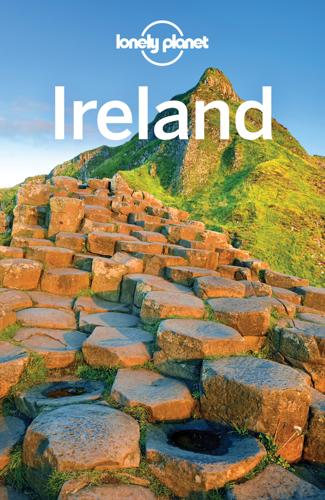
Lonely Planet Ireland
by
Lonely Planet
The average return trip takes three to four hours and it gets crowded on sunny weekends. At the summit you'll find a 1905 whitewashed church and a 9th-century oratory fountain. Views are sublime. National Famine MemorialMONUMENT ( GOOGLE MAP ) Opposite the car park on the far side of the road is the National Famine Memorial, a spine-chilling sculpture of a three-masted ghost ship wreathed in swirling skeletons, commemorating the lives lost on so-called 'coffin ships' employed to help people escape the Famine. Westport Pop 5600 Bright and vibrant even in the depths of winter, Westport is a photogenic Georgian town with tree-lined streets, a riverside mall and a great vibe.

The Rough Guide to Chile
by
Melissa Graham
and
Andrew Benson
Published 11 May 2003
Little by little, it was raised on the bed of stones until it was level with its platform; at this point, the fact, finished moai brought down from the quarry, which were probably placed in shallow pits (that gradually built up) until they could be transported to their ahu. One of them bears an image on its chest of a three-masted sailing ship, suggesting that they were carved after European contact. Among this mass of shapes, still attached to the rock face, is El Gigante, the biggest moai ever carved, stretching over 20m from top to bottom. Experts believe that it would have been impossible to transport, let alone erect. The east end of the trail culminates in the kneeling, round-headed Moai Tukuturi, the only one of its kind, discovered by Thor Heyerdahl’s expedition in 1955.

Lonely Planet Pocket Hamburg
by
Lonely Planet
Published 1 Mar 2019
For more information, visit www.spielbudenplatz.eu. 1Herbertstrasse STREET MAP GOOGLE MAP Along Davidstrasse, a painted tin wall bars views into Herbertstrasse, a block-long bordello that’s off-limits to men under 18 and to women of all ages. It’s the notorious sinful centre of the district. (Herbertstrasse; bReeperbahn) 1Rickmer Rickmers MUSEUM MAP GOOGLE MAP The 1886 three-masted steel windjammer Rickmer Rickmers is now a museum ship; from the restaurant on deck you have fine harbour views. (%040-319 5959; www.rickmer-rickmers.de; Ponton 1a; adult/child €5/3; h10am-6pm; bLandungsbrücken) 1Beatles Tour WALKING MAP GOOGLE MAP For an entertaining look at the Beatles in Hamburg, try this Beatles tour offered by the fun and engaging Stephanie Hempel.

Lonely Planet Pocket Hamburg
by
Anthony Ham
Published 15 Nov 2022
(Grosse Freiheit 39; bReeperbahn) 1Herbertstrasse STREET map Google map Along Davidstrasse, a painted tin wall bars views into Herbertstrasse, a block-long bordello that’s off-limits to men under 18 and to women of all ages. It’s the notorious sinful centre of the district. (Herbertstrasse; bReeperbahn) 1Rickmer Rickmers MUSEUM map Google map The 1886 three-masted steel windjammer Rickmer Rickmers is now a museum ship; from the restaurant on deck you have fine harbour views. (%040-319 5959; www.rickmer-rickmers.de; Ponton 1a; adult/child €5/3; h10am-6pm; bLandungsbrücken) Rickmer Rickmers | MICHAEL ROSEBROCK/SHUTTERSTOCK © 1Beatles Tour WALKING map Google map For an entertaining look at the Beatles in Hamburg, try this Beatles tour offered by the fun and engaging Stephanie Hempel.
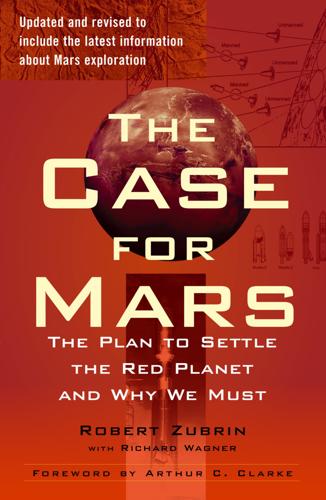
Case for Mars
by
Robert Zubrin
Published 27 Jun 2011
However, just as Columbus would not have traveled very far if he had held his expedition on the dock until an iron steamship or a Boeing 747 was available for trans-Atlantic transport, so the first generation of Mars explorers will have to settle their hopes upon a more primitive set of technologies than will be available to travelers of a later era. Columbus crossed the Atlantic with vessels designed for Mediterranean and Atlantic coastal traffic. It was only after European outposts were created in the Americas that the technology driver came into being to propel naval architecture from Columbus’s primitive craft to three-masted caravels, to clipper ships, to ocean liners, and to airliners. Similarly, establishing human settlements on Mars will drive the creation of more advanced forms of space propulsion. For that reason, up till now we have based our discussion of Mars missions entirely upon the current primitive state of space technology.
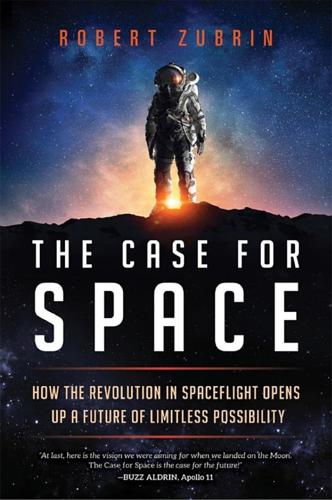
The Case for Space: How the Revolution in Spaceflight Opens Up a Future of Limitless Possibility
by
Robert Zubrin
Published 30 Apr 2019
Columbus dared the Atlantic in small, frail coastal craft that, even fifty years later, no one would have attempted to use to cross the ocean. This was how it had to be. Until European civilization became transatlantic, there was no cause to develop truly Atlantic-capable vessels. But once Europeans found their New World, soon enough they developed reliable three-masted caravels, then clipper ships, steamships, ocean liners, and Boeing 747s. Similarly, the first explorers will make their six-month voyages to Mars in small, cramped vessels, demonstrating a toughness that will be a source of awe to their grandchildren, who will do their three-week interplanetary transits in style aboard well-appointed fusion-powered spaceliners.
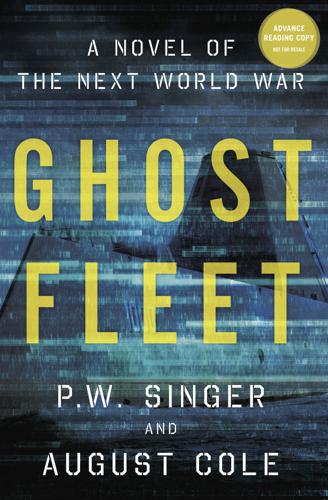
Ghost Fleet: A Novel of the Next World War
by
P. W. Singer
and
August Cole
Published 28 Jun 2015

Slow Boats to China
by
Gavin Young
Published 24 Feb 1983
Like others, her agency loved airlines and spurned ships, but she put me in touch with the father of the Sri Lankan navy. In vain: Admiral Rajan Kadirgamar politely dismissed the idea of sailing boats to the Bay of Bengal. ‘There used to be marvellous brigs – sailing brigs, three-masted, square-rigged, full-fledged sailing ships to Rangoon and Chittagong.’ Dismally I noted the words ‘used to be’. ‘All gone. These chaps used to take salt to the Andamans and bring back rice. All gone.’ The second weakly soaring bird of hope folded its wings and plunged lifeless to earth. Two to go. * Meanwhile I looked around Colombo.
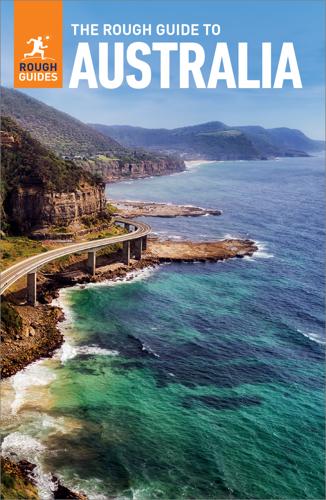
The Rough Guide to Australia (Travel Guide eBook)
by
Rough Guides
Published 14 Oct 2023
Any ferry from Circular Quay will cruise by the Opera House, but get onboard quick to snag an outdoor seat, especially on busy Sundays to Manly when there’s unlimited public transport for a small cost. Sydney Harbour Tall Ships http://sydneytallships.com.au. Sydney Harbour Tall Ships operates the Svanen, a beautiful, three-masted Danish ship, built in 1922, which moors at Campbell’s Cove. “Lunch” and “Twilight” cruises (both: 2hr) sail past iconic harbour sights while guests devour gourmet seafood barbecue offerings. One of a number of more romantic sailing options. Sydney Heritage Fleet http://shf.org.au. Sydney’s oldest sailing ship, the James Craig, an 1874 three-masted iron barque, is part of the Sydney Heritage Fleet based at Wharf 7, 58 Pirrama Rd, Pyrmont, near Star City Casino, and runs afternoon cruises (over-12s only; refreshments and lunch included in the fee).

The Rough Guide to France (Travel Guide eBook)
by
Rough Guides
Published 1 Aug 2019
In the child-friendly museum, engaging ship models, panoramas and period film footage lead you through the main events of Dunkerque’s history, from its beginnings as a fishing hamlet. It’s an easily digestible size and mounts good temporary exhibitions on related themes. Opposite the museum are the three attractive preserved historic ships that make up the “floating” museum. You can visit the three-masted sailing ship Duchesse Anne, built in Germany in 1901, the Sandettié lightship, and the Guilde barge. Musée Dunkerque 1940 32 courtines du Bastion (off rue des Chantiers de France) • mid-March to mid-Sept daily 10am–6pm • €8 • 03 74 06 02 81, dynamo-dunkerque.com The Musée Dunkerque 1940 is the place to learn all about the 1940 evacuations of Operation Dynamo that rescued over 340,000 Allied soldiers.
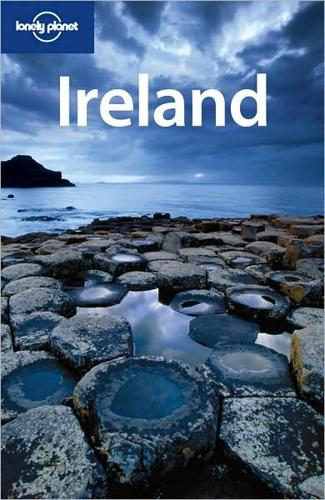
Ireland (Lonely Planet, 9th Edition)
by
Fionn Davenport
Published 15 Jan 2010
The truly contrite take the original 40km route from Ballintubber Abbey, Tóchar Phádraig (Patrick’s Causeway), and ascend the mountain barefoot. The trail taken by less contrite folk begins in the village of Murrisk (Muraisc) beside a visitor centre ( 098-64114; www.croagh-patrick.com; 11am-5pm mid-Mar–Oct). Opposite the car park is the National Famine Memorial, a spine-chilling sculpture of a three-masted ghost ship wreathed in swirling skeletons, commemorating the lives lost on so-called ‘coffin ships’ employed to help people escape the Famine (1845–51). The path down past the memorial leads to the scant remains of Murrisk Abbey, founded by the O’Malleys in 1547. Ruth and Myles O’Brien, proprietors of the raspberry-pink-painted pub The Tavern ( 098-64060; Murrisk; bar food €8.95-21.95, restaurant mains €15-30, set menu €27.50; bar food noon-9pm daily year-round, restaurant lunch Fri & Sat, dinner nightly May-Sep), reckon ‘the locals really own the place; we just pay the mortgage’, which explains the convivial atmosphere around its turf fires.
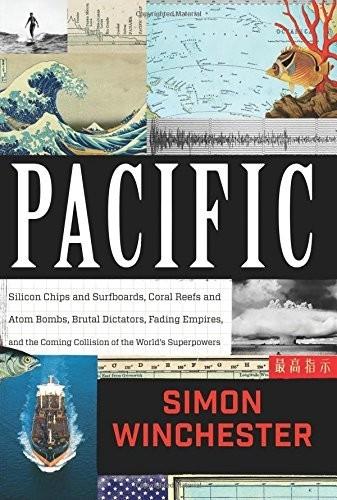
Pacific: Silicon Chips and Surfboards, Coral Reefs and Atom Bombs, Brutal Dictators, Fading Empires, and the Coming Collision of the World's Superpowers
by
Simon Winchester
Published 27 Oct 2015

France (Lonely Planet, 8th Edition)
by
Nicola Williams
Published 14 Oct 2010
Sights & Activities The Musée Portuaire (Harbour Museum; 03 28 63 33 39; www.museeportuaire.com; 9 quai de la Citadelle; adult/student/family €4/3/10; 10am-12.45pm & 1.30-6pm Wed-Mon, also open Tue & no midday closure Jul & Aug), housed in a one-time tobacco warehouse, will delight ship model–lovers of all ages. Guided tours (adult/student/family €7.50/6/18, incl museum €9/7.50/22) take visitors aboard a lighthouse ship, a peniche (barge) and the Duchesse Anne, a three-masted training ship built for the German merchant marine in 1901 and acquired by France as WWII reparations. The somewhat faded, turn-of-the-20th-century seaside resort of Malo-les-Bains is 2km northeast of Dunkirk’s city centre (served by buses 3 and 9). Its wide, promenade-lined beach, Plage des Alliés, is named in honour of the Allied troops evacuated to England from here in 1940.
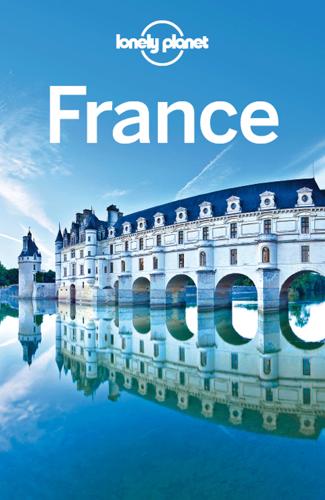
Lonely Planet France
by
Lonely Planet Publications
Published 31 Mar 2013
Sights & Activities The Musée Portuaire (Harbour Museum; www.museeportuaire.com; 9 quai de la Citadelle; adult/child/family €5/4/13; 10am-12.45pm & 1.30-6pm Wed-Mon) , housed in a one-time tobacco warehouse, will delight fans of maritime history and, especially, of model ships. Guided tours (adult/child/family incl museum €12.50/10/30; 3.30pm Wed & Sun) of the adjacent harbor take visitors aboard a lighthouse ship, a peniche (barge) and the Duchesse Anne, a three-masted training ship built for the German merchant marine in 1901 and acquired by France as WWII reparations. Some signs are in English. It’s situated 500m northwest of the tourist office. To get a feel for the 1940 evacuation of Dunkirk, drop by the not-for-profit Mémorial du Souvenir (www.dynamo-dunkerque.com; Courtines du Bastion 32; adult/child €4.50/free; 10am-noon & 2-5pm Apr-Sep) , staffed by dedicated volunteers, most with personal ties to this period in history.
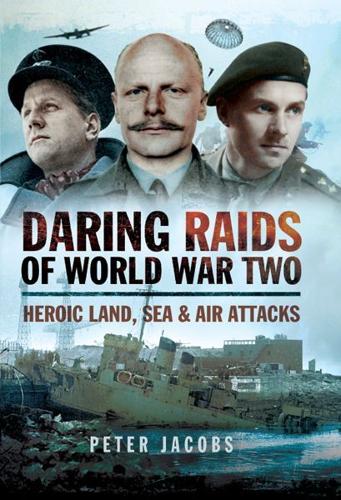
Daring Raids of World War Two: Heroic Land, Sea and Air Attacks
by
Peter Jacobs
Published 29 Jun 2015
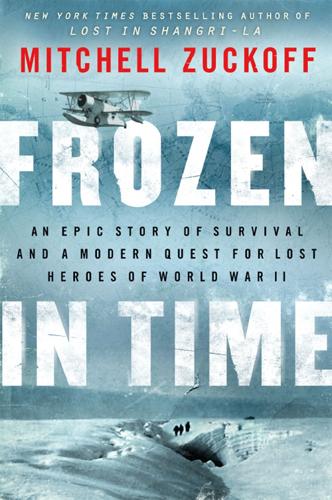
Frozen in Time
by
Mitchell Zuckoff
Published 4 Mar 2013
By the time he assembled the required recommendations, the seas had shifted and he was instead headed toward the Air Force Academy. But his heart wasn’t in it. His high school German teacher suggested the Coast Guard. At seventeen, King caught sight of the Eagle, the Coast Guard’s three-masted cutter, known as “America’s Tall Ship.” A service that sailed such a magnificent ship was the place for him. During a thirty-year career, King rose to chief of the Coast Guard Office of Aviation Forces. After retiring in 2004, he launched an aviation and homeland security consulting firm. He also became involved with the Coast Guard Aviation Association, a fraternal group known jovially as the Ancient Order of the Pterodactyl, a title befitting members’ proud self-image as flying dinosaurs.

Sextant: A Young Man's Daring Sea Voyage and the Men Who ...
by
David Barrie
Published 12 May 2014

Growth: From Microorganisms to Megacities
by
Vaclav Smil
Published 23 Sep 2019
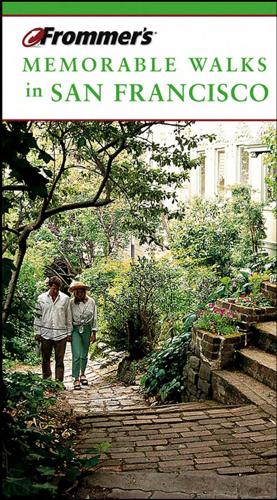
Frommer's Memorable Walks in San Francisco
by
Erika Lenkert
Published 15 Mar 2003
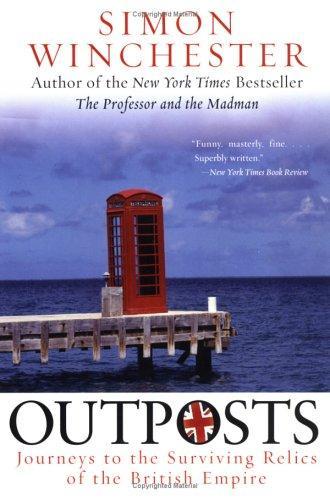
Outposts: Journeys to the Surviving Relics of the British Empire
by
Simon Winchester
Published 31 Dec 1985

Scandinavia
by
Andy Symington
Published 24 Feb 2012
Forum Marinum MUSEUM (www.forum-marinum.fi; Linnankatu 72; admission €7, plus museum ships €5; 11am-7pm) Forum Marinum is an impressive maritime museum near Turku Castle. As well as a nautically crammed exhibition space devoted to Turku’s shipping background, it incorporates a fleet of museum ships including the mine layer Keihässalmi , the three-masted barque Sigyn and the impressive 1902 sailing ship Suomen Joutsen (Swan of Finland). The ships can be visited independently of the museum. Turun Tuomiokirkko CATHEDRAL (www.turunseurakunnat.fi; 9am-7pm) Commanding Turku Cathedral, dating from the 13th century, is the national shrine and ‘mother church’ of the Lutheran Church of Finland.
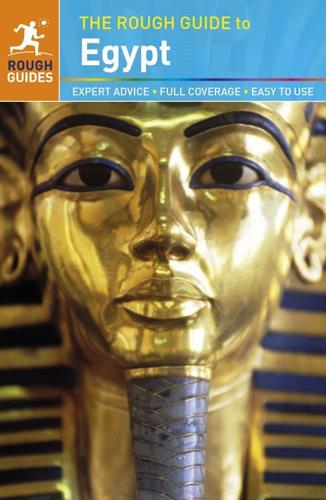
The Rough Guide to Egypt (Rough Guide to...)
by
Dan Richardson
and
Daniel Jacobs
Published 1 Feb 2013

An Empire of Wealth: Rise of American Economy Power 1607-2000
by
John Steele Gordon
Published 12 Oct 2009

Atlantic: Great Sea Battles, Heroic Discoveries, Titanic Storms & a Vast Ocean of a Million Stories
by
Simon Winchester
Published 27 Oct 2009
Within months other expeditions had set out from the Portuguese harbors, and they fanned out along the at-long-last-accessible coast of Africa to explore it, round it, and then eventually to head off east beyond the continent of Africa, to the great treasure grounds of the Indies. The ships grew steadily in size—from the tiny barcas used by Eannes, to the three- and four-masted caravels, and the gigantic naos employed on the spice runs of the sixteenth century. The equipment carried on the ships’ bridges became more sophisticated: the astrolabe was soon to be invented, the compass to be employed, sounding wires to be made long enough to deal with exceedingly deep waters, and tide tables and sight reduction tables to be published.
…
The so-called triangular trade was arranged so that goods were taken from Britain to the African ports or slave castles, like that at Cape Coast;43 slaves from these ports were then shipped across the infamous Middle Passage to the American slave depots; and then, once the vessel had been emptied and cleansed, New World cargoes went from there back to Britain. And so, in small vessels called snows, in barques and brigs or in three-masted square-rigged vessels that, somewhat oddly to modern ears, were formally known as ships, the slave-ship captains set off fully laden, from England. Their orders were quite simply to proceed to West African ports and, using the cargoes they had shipped with them from England as barter, according to their standing orders “to procure as many good merchantable slaves as you can.”
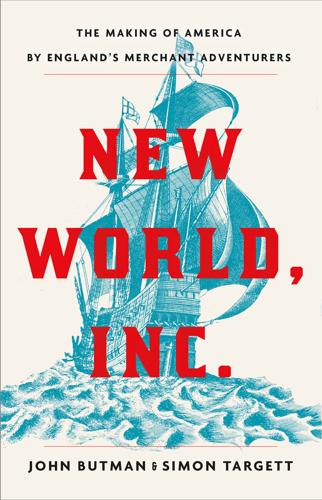
New World, Inc.
by
John Butman
Published 20 Mar 2018
And the inexplicable collapse of Gilbert’s venture came just as the disappointing results of the latest Frobisher assays were coming to light. Gilbert went silent, just as Frobisher had. Perhaps, after all, England was not capable of creating its own “Ilandish” empire. 10 NOVA ALBION IN SEPTEMBER 1580, a three-masted galleon, riding exceptionally low in the water, sailed into the English Channel. As the ship, the Golden Hind, neared land, her captain—a short, stout man—barked out a question to some fishermen as they scudded by. “Is the queen alive?” The captain, Francis Drake, had not set eyes on his home coastline for nearly three years. During that time, he had sailed around the world, completing the first circumnavigation by an English captain and the first since the sole surviving ship of Magellan’s fleet returned to Spain in 1522.
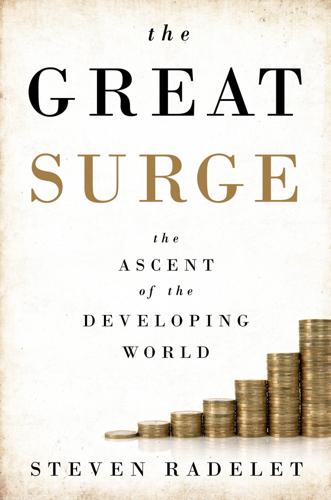
The Great Surge: The Ascent of the Developing World
by
Steven Radelet
Published 10 Nov 2015

Nomads: The Wanderers Who Shaped Our World
by
Anthony Sattin
Published 25 May 2022
The biggest challenge posed by the Venus transit was not the difficulties of observation or calculation, large as they were, but the fact that it only occurred once every 105 years, which is why the British Admiralty were involved. The master of the royal dockyards at Deptford on the River Thames was commanded to find and equip a suitable vessel. He chose a three-masted, east-coast collier, a slow, solid, flat-bottomed cargo ship for which he paid £2,840, the equivalent of £500,000 today, and renamed it Endeavour. He then spent twice that amount stripping it down, sheathing and caulking it, adding a third deck and fitting it out. These were real, quantifiable, financial costs. He then armed the ship with ten cannon and a range of advanced weapons, and loaded it with cutting-edge scientific instruments as well as pigs, chickens, a milk goat and other supplies essential for a long ocean voyage.

Lemon Tree: An Arab, a Jew, and the Heart of the Middle East
by
Sandy Tolan
Published 1 Jan 2006
Four thousand tons of crates would soon be stacked up in the Sofia synagogue, where Moshe and Solia had been married, as workers scrambled to find foreign freighters to haul the crates to Israel. The train hissed to a stop near the port of Bakar. Inside, Solia and Moshe prepared their bags and got Dalia ready in her basket as they waited to disembark. Through the windows, perhaps three hundreds yards away, they could see a great masted ship floating at the pier, its lights shining against the night sky. The Pan York was as long as a football field, its three masts towering over the deck; below, its cargo holds, with a capacity of eleven million pounds to haul bananas and phosphates, had been converted to carry 3,694 Bulgarian Jews: 42 Alcalays, 68 Aledjems, 68 Barouhs, 124 Cohens, 20 Daniels, 7 Danons, 4 Djivris, an Elias, an Elder, an Ephraim, and 54 Eshkenazis.
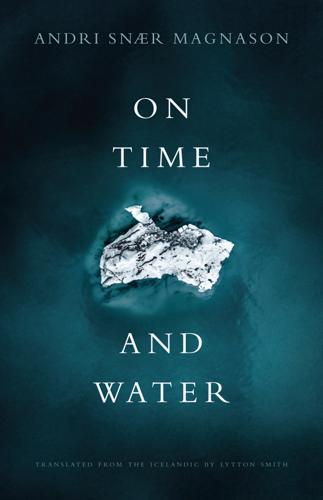
On Time and Water
by
Andri Snaer Magnason
Published 15 Sep 2021
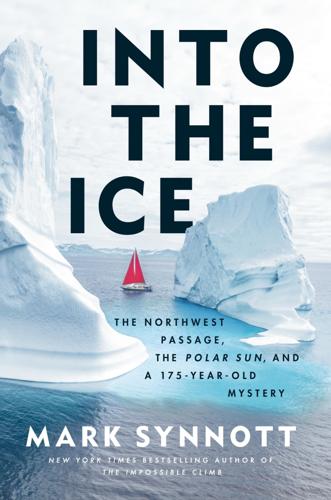
Into the Ice: The Northwest Passage, the Polar Sun, and a 175-Year-Old Mystery
by
Mark Synnott
Published 14 Apr 2025
Franklin’s ships were bomb vessels, which, as the name implies, means that they were designed as floating platforms to support cannons for shore and shipside bombardments in battle, and Terror had indeed seen its share of action. Both ships were heavily built to absorb the recoils of the cannons and bow-mounted, muzzle-loaded mortars. Rigging-wise, they were schooners, each with three masts and a long bowsprit. Terror, the smaller of the two ships, weighed in at 325 tons and was 102 feet in length overall. She had been built in 1813 and immediately seen service in the War of 1812, where she fought in several battles, including the bombardment of Stonington, Connecticut. When she got back to England, she was laid up for a number of years before sailing to the Mediterranean and then to Hudson Bay in 1836, where she became trapped in the ice near Southampton Island.
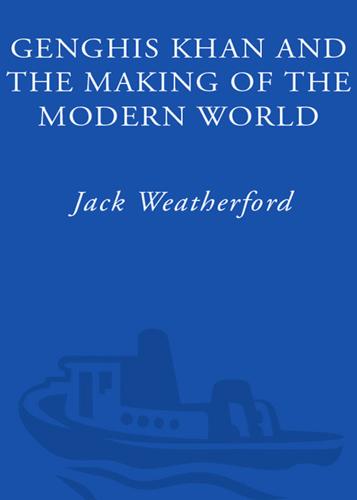
Genghis Khan and the Making of the Modern World
by
Jack Weatherford
Published 21 Mar 2005
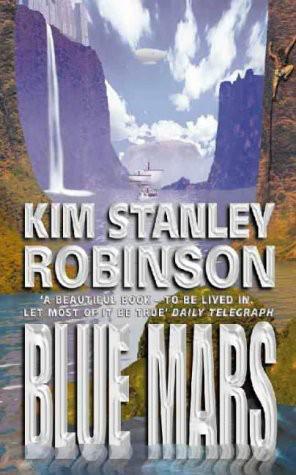
Blue Mars
by
Kim Stanley Robinson
Published 23 Oct 2010
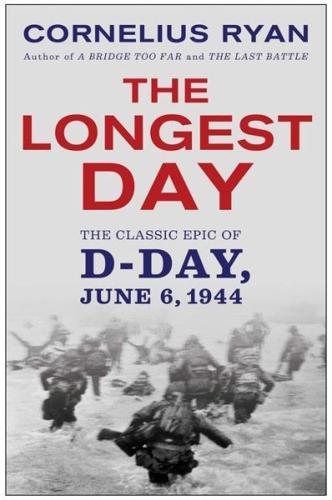
The Longest Day
by
Cornelius Ryan
Published 1 Jan 1959
To quiet his own nerves and those of a brother officer, he opened to the Twenty-third Psalm and read aloud, “The Lord is my Shepherd; I shall not want. ...” It wasn’t all solemn. There was lightheartedness, too. Aboard the transport H.m.s. Ben Machree, some Rangers strung three-quarter-inch ropes from the masts to the decks and began climbing all over the ship, much to the astonishment of the British crew. On another ship, members of the Canadian 3rd Division held an amateur night with assorted recitations, jigs and reels and choral offerings. Sergeant James Percival “Paddy” de Lacy of the King’s Regiment became so emotional listening to the “Rose of Tralee” played on the bagpipes that he forgot where he was and stood up and offered a toast to Ireland’s Eamon de Valera for “keepin’ us out of the war.”
…
At 4:45 A.m., Lieutenant George Honour’s midget submarine X23 broke the surface of a heaving sea one mile off the Normandy coast. Twenty miles away its sister sub the X20 also surfaced. These two fifty-seven-foot craft were now in position, each marking one end of the British-Canadian invasion area—the three beaches Sword, Juno and Gold. Now each crew had to erect a mast with a flashing light, set up all the other visual and radio signaling apparatus and wait for the first British ships to home in on their signals. On the X23 Honour pushed up the hatch and climbed stiffly out onto the narrow catwalk. Waves rolled over the little deck and he had to hang on to avoid being washed overboard. Behind him came his weary crew.

Volt Rush: The Winners and Losers in the Race to Go Green
by
Henry Sanderson
Published 12 Sep 2022
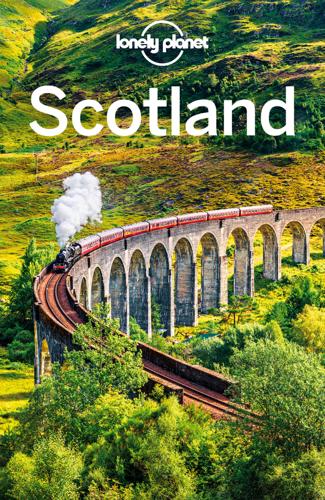
Lonely Planet Scotland
by
Lonely Planet
An atmospheric recreation of a Glasgow shopping street from the early 20th century puts the vintage vehicles into a social context. There's also a cafe. It's west of the centre. Get bus 100 from the north side of George Sq or walk the signposted path from the Kelvingrove Museum – about 0.6 miles. The magnificent three-masted Glenlee, launched in 1896, is the Tall Ship ( GOOGLE MAP ; www.thetallship.com; Riverside Museum; h10am-5pm; c), which is berthed alongside the museum. On board are family-friendly displays about the ship's history, restoration and shipboard life during its heyday. Upkeep costs are high, so do donate something or have a coffee below decks.
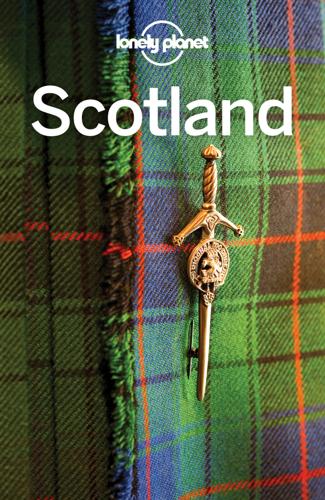
Lonely Planet Scotland
by
Lonely Planet
An atmospheric recreation of a Glasgow shopping street from the early 20th century puts the vintage vehicles into a social context. There’s also a cafe. It’s west of the city centre. Get bus 100 from the north side of George Sq or walk (signposted) from the Kelvingrove Art Gallery & Museum – about half a mile. The magnificent three-masted Glenlee, launched in 1896, is the Tall Ship (%0141-357 3699; www.thetallship.com; Riverside Museum; h10am-5pm Feb-Oct, to 4pm Nov-Jan; c) F, which is berthed alongside the museum. On board are family-friendly displays about the ship’s history, restoration and shipboard life during its heyday. Upkeep costs are high, so donate something or have a coffee below decks.
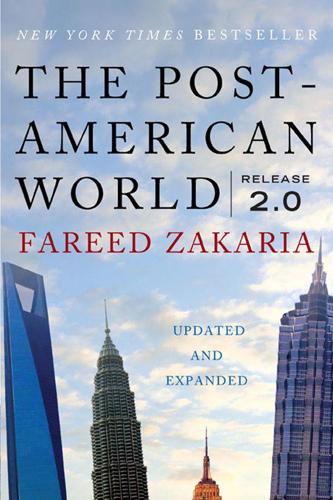
The Post-American World: Release 2.0
by
Fareed Zakaria
Published 1 Jan 2008
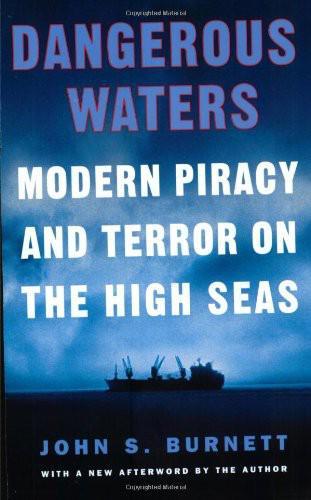
Dangerous Waters: Modern Piracy and Terror on the High Seas
by
John S. Burnett
Published 1 Jan 2002
Or have I? The captain will be on the bridge all night; his concern is not just pirates but navigation through the narrow channel. It is very black out there. A large container ship is bearing down on us. It apparently wants to pass. We are showing three vertical red lights on our mast, indicating that we are restricted in our ability to maneuver. The ship behind us switches on a red light, indicating he is carrying dangerous cargo. Severe little Wasim offers, “I’m thinking maybe he will be showing four lights. Then maybe we will be showing five. . . .” He will pass but he will have to come very close to us to do so, and in these waters it is a dicey maneuver.
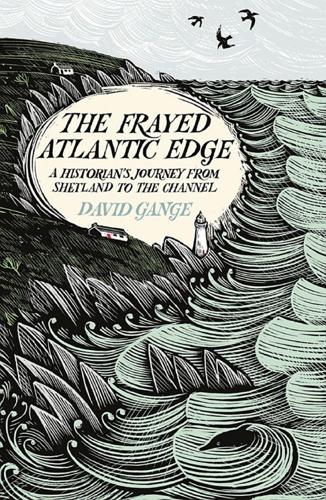
The Frayed Atlantic Edge: A Historian’s Journey From Shetland to the Channel
by
David Gange
Published 10 Jul 2019
It was a time when Highland land held value similar to that in London (as opposed to the thousandfold differential today) and when the small steps from Loch Maree to the sea permitted integration in the trade networks that counted. Small, moss-covered stoneworks on this wild lochside were once a large and wealthy series of manufactories. In the seventeenth century, there were three main demands for the wood of this region. Timber merchants took pine and sold it for such purposes as masts for ships. The leather trade began to strip the oakwoods, bark often crossing the sea for use in booming Irish tanneries. And foundries of iron and glass discriminated less by species as they consumed vast quantities of charcoal. Until this time, the Scottish market for glass had been tiny and iron production had been small and localised, conducted on farms or by clan armourers.

The Rough Guide To Devon & Cornwall
by
Rough Guides
Published 29 Apr 2024

The Rough Guide to Devon & Cornwall
by
Robert Andrews
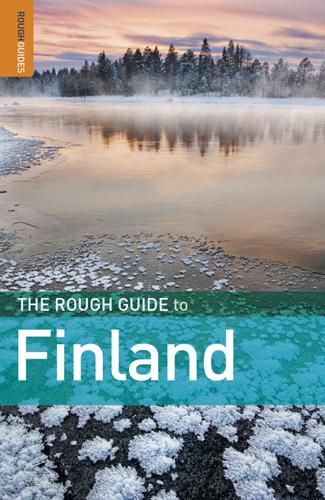
The Rough Guide to Finland
by
Rough Guides
Published 31 May 2010
Moored out back at the banks of the Aura float a fleet of museum ships (entrance included with €12 museum ticket, otherwise €5 per boat), including: the Suomen Joutsen, a fully rigged frigate that was once a depot for submarines and a hospital; the Keihässalmi, the first minelayer and minesweeper to be constructed in Finland after World War II; and, several blocks east, the Sigyn, a black three-masted wooden vessel built in 1887 in Gothenburg that transported timber all over the Baltic. Needless to say, each of these ships is a guaranteed cure for any kid bored to tears with Finnish museums. Cycling the Turku archipelago With tens of thousands of islands splayed out in the Baltic Sea, the Turku archipelago (Finnish: Turun Saaristo; Swedish: Åbo Skärgård) is a perfect destination for a couple of days’ adventure.

A Clearing in the Distance: Frederick Law Olmsted and America in the 19th Century
by
Witold Rybczynski
Published 1 Jan 1999

Germany Travel Guide
by
Lonely Planet
Climbing the steps above the Landungsbrücken U-/S-Bahn station to the Stintfang stone balcony offers a sweeping panorama, while dozens of port and Elbe River cruises (Click here), starting at the St Pauli Harbour Landungsbrücken, put you right in the middle of the action. On a sunny day, the Landungsbrücken promenade is hugely popular with locals and tourists alike. Rickmer Rickmers MUSEUM Offline map Google map (319 5959; www.rickmer-rickmers.de; Ponton 1a; adult/child €4/3; 10am-6pm Sun-Wed, to 8pm Thu-Sat) The 1886 three-masted steel windjammer Rickmer Rickmers is now a museum ship; from the restaurant on deck you have fine harbour views. THE PRICE OF SEX Especially at the sex clubs on and near the Grosse Freiheit, doorstaff try to lure in the passing crowd with bargain shows, leaving customers to discover the mandatory drink minimum (usually at least €25) once inside.
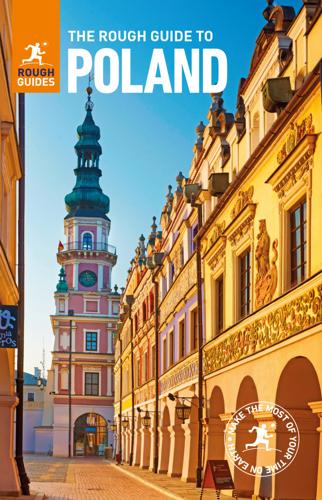
The Rough Guide to Poland
by
Rough Guides
Published 18 Sep 2018
Visitors get to explore the inner workings of the battleship, along with a cross-section of a torpedo, various scale models and uniforms. A deck-top plaque commemorates the vessel’s year-long wartime sojourn in Cowes on the Isle of Wight, where it helped to defend the port against a major German attack in May 1942. Further along the pier is another proudly Polish vessel, the three-masted frigate Dar Pomorza, built in Hamburg in 1909 and used as a Polish Navy training ship during the 1930s and again after World War II. The aquarium al. Jana Pawła II 1 • April, May & Sept daily 9am–7pm; June–Aug daily 9am–8pm; Oct & March daily 10am–5pm; Nov–Feb Tues–Sun 10am–5pm • 24zł • 572 504 608, aquarium.gdynia.pl At the end of the pier, the aquarium is home to around 250 species of sea life, including piranhas, lungfish and turtles.

Owning the Earth: The Transforming History of Land Ownership
by
Andro Linklater
Published 12 Nov 2013
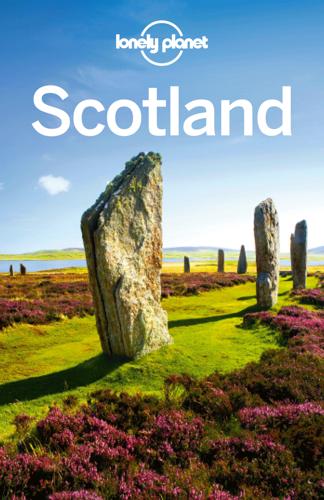
Scotland Travel Guide
by
Lonely Planet
The attention to detail – including a life-sized model of an inmate squatting on a 19th-century toilet – more than makes up for the sometimes tedious commentary. Inveraray Maritime Museum MUSEUM (www.inveraraypier.com; The Pier; adult/child £5/2.50; 10am-4pm) The Arctic Penguin , a three-masted schooner built in 1911 and one of the world’s last surviving iron sailing ships, is permanently moored in Inveraray harbour and houses the Inveraray Maritime Museum. It has interesting photos and models of the old Clyde steamers and puffers, and a display about Para Handy, the fictional sea captain created by local novelist Neil Munro (and celebrated in two successful TV series in the 1960s and 1990s).
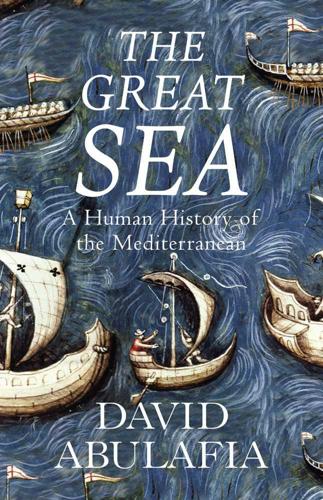
The Great Sea: A Human History of the Mediterranean
by
David Abulafia
Published 4 May 2011
For it was not just the pottery that the Italians acquired from the Muslim world; they also borrowed the technology, laying the foundations of the maiolica industry of Renaissance Italy. A bowl inserted in the façade of the church of San Piero a Grado near Pisa displays a three-masted vessel with triangular sails, a sharply curved prow and a steep poop; this is a ship from Muslim Majorca, and the design is very stylized.26 Even so, the image conveys a blurred impression of the sort of bulky sailing ship that carried goods between Spain, Africa and Sicily in the days of Islamic hegemony in the southern waters of the Mediterranean.
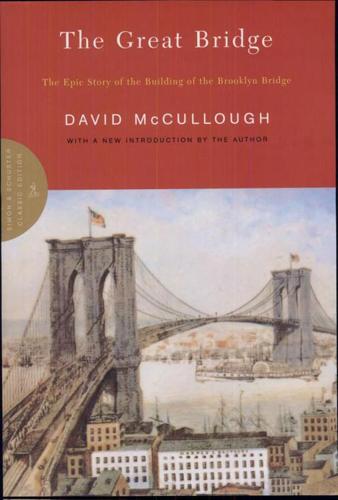
The Great Bridge: The Epic Story of the Building of the Brooklyn Bridge
by
David McCullough
Published 1 Jun 2001
This was extraordinary, in view of the known hazards, and it was generally taken as a sign of conscientious management. The Brooklyn tower by then had reached a height of about seventy feet. The day of the accident an eight-ton block of granite was being hauled to the top of the tower by one of the three huge boom derricks mounted there, which were all held in position by wire rigging, like the masts of a ship. Suddenly a socket in one of the guy wires broke and two derricks fell from the tower. One man, a rigger on the derricks, was struck by a great wooden boom that sheared off half his skull. He was thrown down on the top of the tower, stone dead.
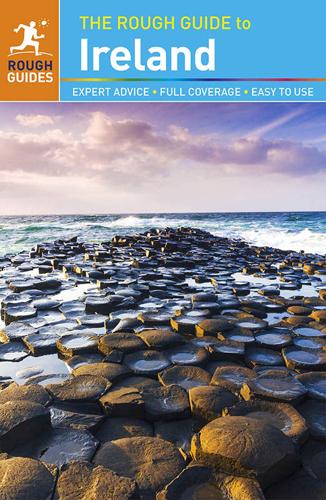
The Rough Guide to Ireland
by
Clements, Paul
Published 2 Jun 2015

Fodor's Hawaii 2013
by
Fodor's
Published 22 Jul 2012
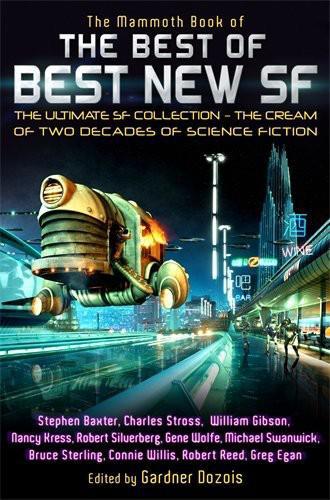
The Best of Best New SF
by
Gardner R. Dozois
Published 1 Jan 2005

Great Britain
by
David Else
and
Fionn Davenport
Published 2 Jan 2007